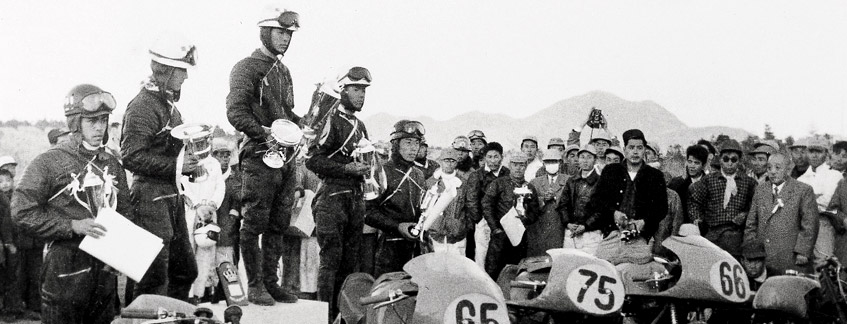At the end of May 1955, Nippon Gakki launched a bold strategy. The company would broadly highlight its presence in the motorcycle market by demonstrating the performance of the newly developed YA1 in the racing world. It was a new challenge.
At that time, motorcycle racing in Japan was more than just a motor sport; the races served as technological contests where companies could publicize the superiority of their products. The races were sponsored by the Japan Small Vehicle Manufacturers Association and backed by the Ministry of International Trade and Industry. Each company that took part was potentially risking its future because the results of the races were linked directly to sales.
The first race YMC chose to enter was the third Mt. Fuji Ascent Race, which was held on July 10, 1955. It was a very important event in the motorcycle industry at the time. Honda had won the race the first two times it had been held. The YA1 had only been on sale for five months, so once the decision to compete had been made, there was only one month left before the race. Time was at a premium. Yamaha was fully committing itself to competitive racing and focused all of its energy on victory. The company made preparations for the race while truly betting its future on the outcome.
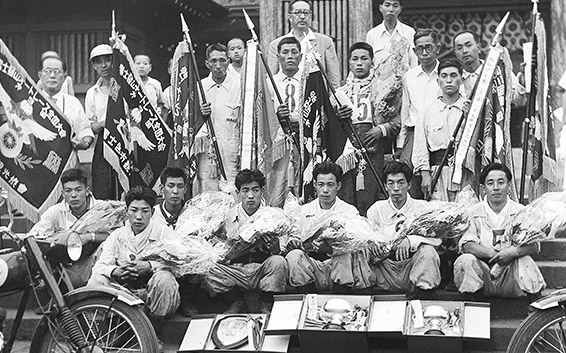
Yamaha would participate in the commercial bike division (125 cc class) in which modifications for the race were not allowed. The company did not necessarily have absolute confidence in its technology since YMC had just been founded, but it made all-out efforts to boost engine output.
A new muffler from DKW gave an unexpected boost to engine performance. Attaching the muffler to the YA1 immediately increased the maximum output of the engine by 0.5 horsepower. The still relatively inexperienced technical team was surprised that the exhaust system played such a crucial role in engine performance.
Premium aircraft gasoline was also purchased from the Self-Defense Forces in the hope that increasing the fuel’s octane content would improve performance. However, during a test run in the middle of the night, the cylinder heads and spark plugs immediately glowed bright red, making the bike look like a fireball streaking between the trees in the black of night. Needless to say, the fuel was unusable.
Responding to calls from the race-site crews to send exceptional engines, the technical team worked day and night for three days straight until the day before the race running tests and making improvements. They succeeded in delivering 16 engines, including five spares, to the race-site crews. Twelve riders were found with the help of the company’s exclusive dealers around the country.
It was the biggest motorcycle race in Japan at the time, so fans from all over Japan gathered on the day of the race. Each company also had cheering squads whose members turned out in droves. The prestige of each company was truly on the line.
The race course was 24.2 km long and ran from Sengen Shrine in Fujinomiya, Shizuoka Prefecture to the third station of Mt. Fuji, for an altitude gain of 1,400 meters. There were 49 motorcycles from 16 manufacturers racing in the 125 cc class in which Yamaha was entered. The race was held in a time-trial format, and in the end, Yamaha won in 29 minutes, 07 seconds. Seven YA1s were among the top 10 finishers. It was a landslide victory that demonstrated the outstanding performance of the YA1, including its four-speed transmission, which efficiently harnessed the engine’s power, and its stable handling in speeding through corners on the mountain roads.
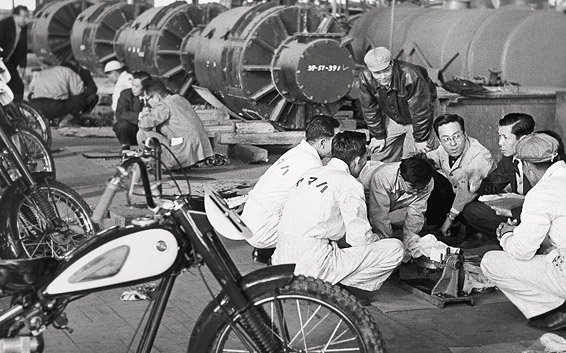
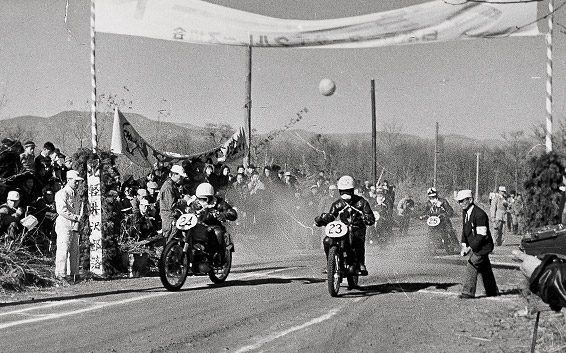
Yamaha also took part in the first Asama Highlands Race held in November that same year. It was a more advanced race held on regular roads, but the road surface was made of volcanic ash and riders had to race along the narrow, difficult course at full speed while continually negotiating troughs dug out by the rain. Yamaha again, though, dominated the upper ranks of the 125 cc class.
In preparation for participation in the Asama Highlands Race, President Kawakami ordered the technical team to double the YA1’s horsepower. Applying the principle of resonance used in trombones to the resonance of the exhaust system, the technical team boosted engine power by changing the size of the exhaust expansion chamber. The knowledge of the team was fully tapped and put into practical application. For example, based on hydrodynamic principles, the team thought it could substantially boost horsepower by smoothing the flow of gases through the cylinder ports, so they smoothed the ports with a file. Their efforts resulted in raising the YA1’s power from five horsepower to 10 horsepower in only two months.
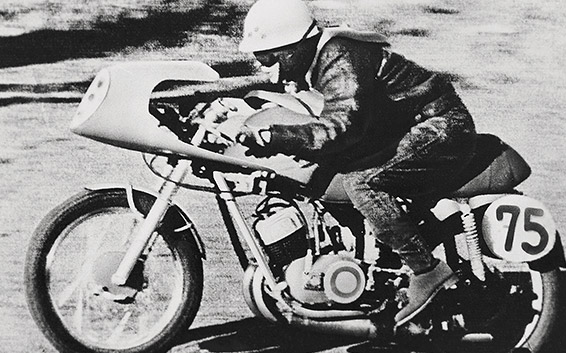
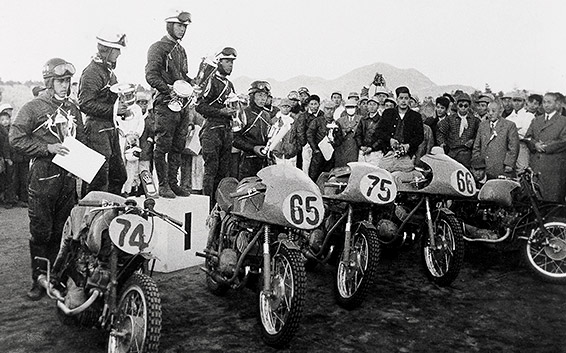
After winning a race, Yamaha would hold victory parades in Hamamatsu, home of the company’s headquarters, Tokyo, Osaka, Kobe, and elsewhere. The company also made documentary films about the races and distributed them to its sales branches. Yamaha’s technical achievements and publicity activities both gradually served to raise public awareness of the Yamaha name. Annual production, which was 2,272 units in 1955, the year of YMC’s establishment, rose to 8,743 units in 1956 and still further to 15,811 units in 1957. Success in racing highlighted the reliability of Yamaha’s technology and steadily helped promote sales.
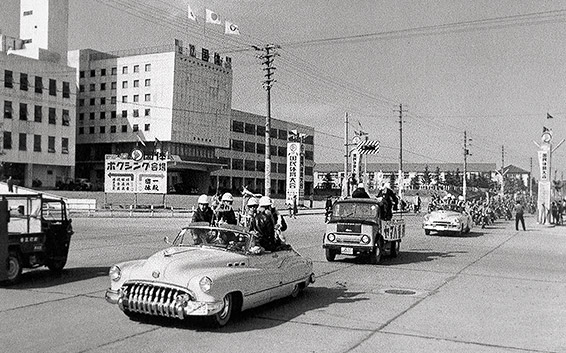
.










